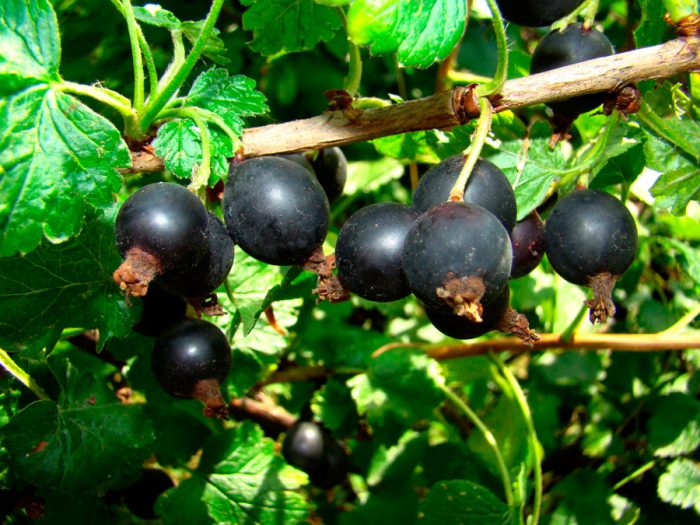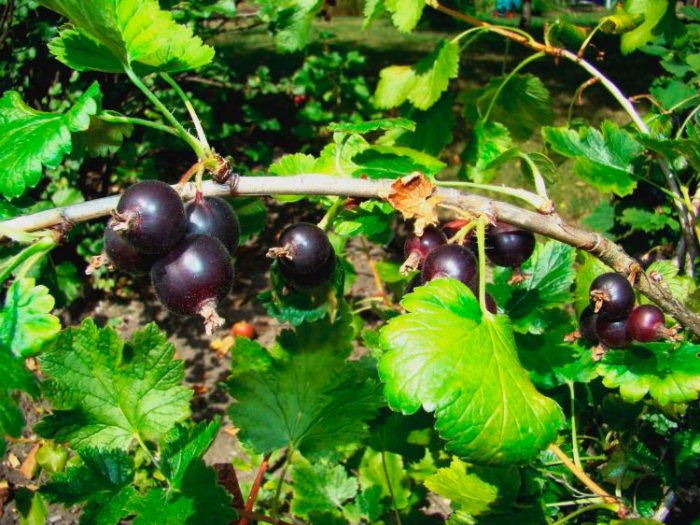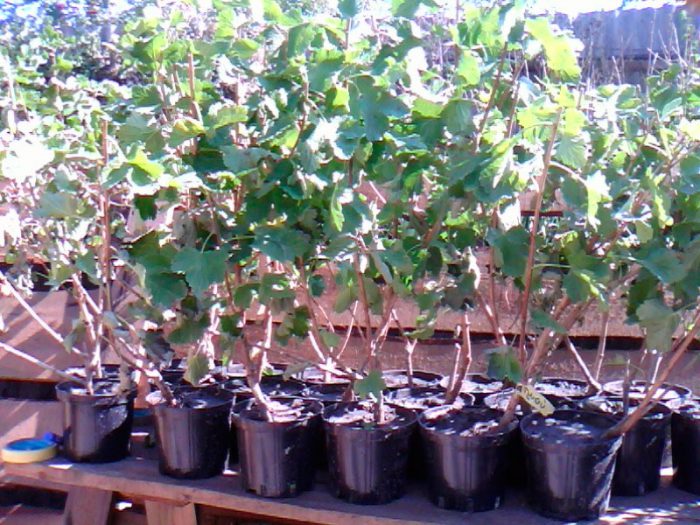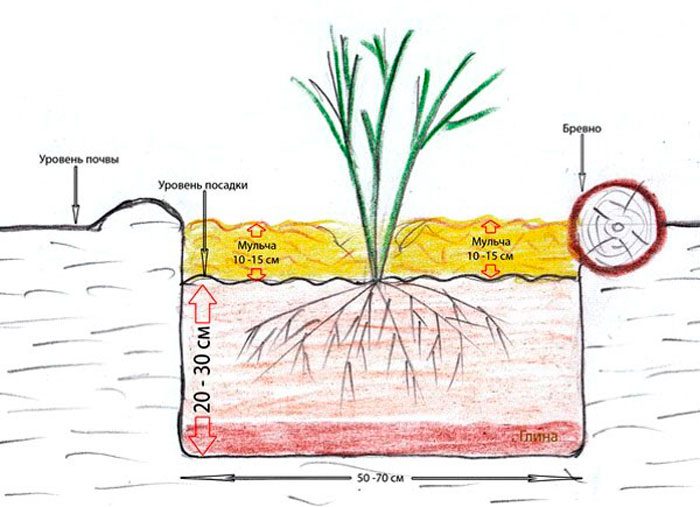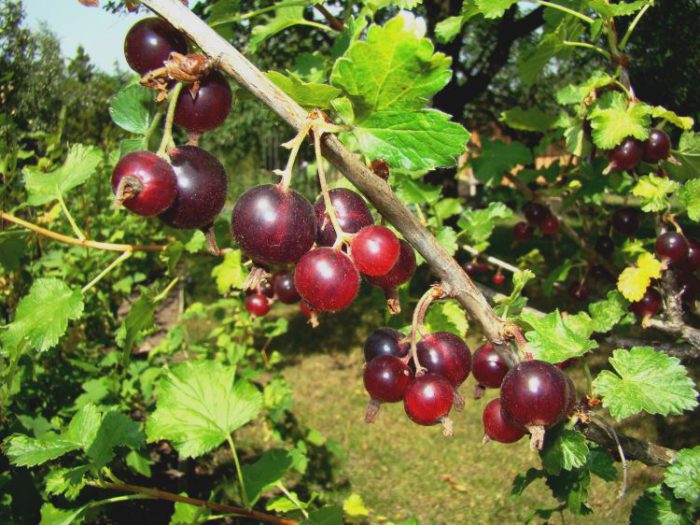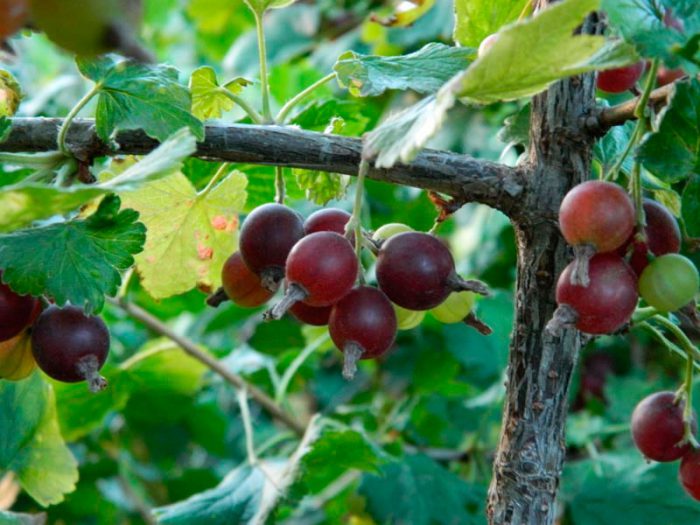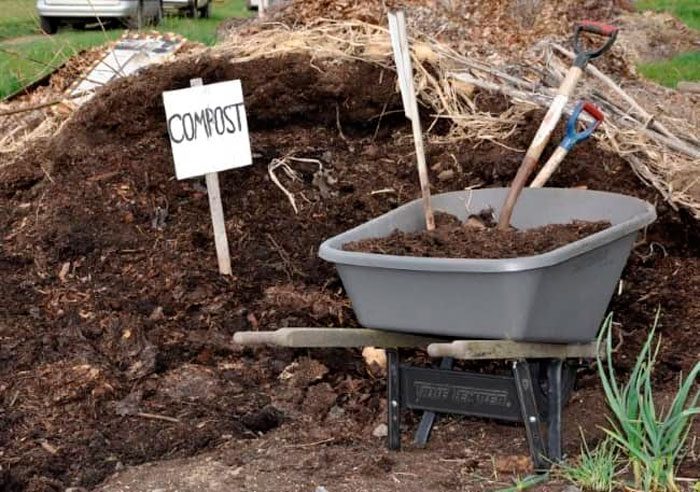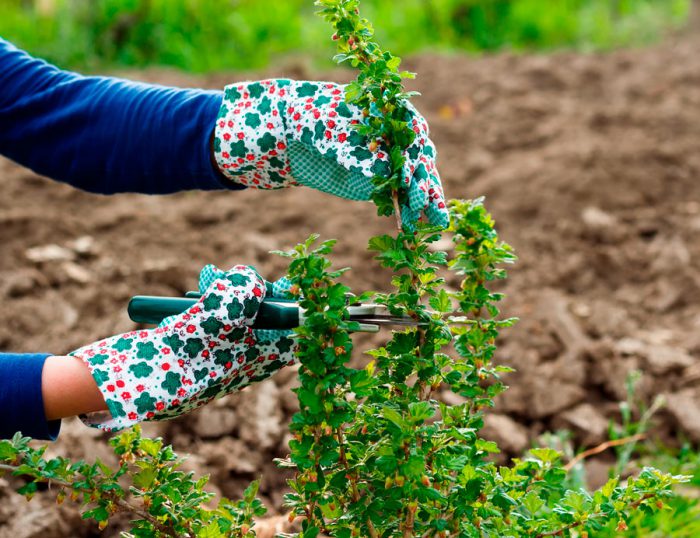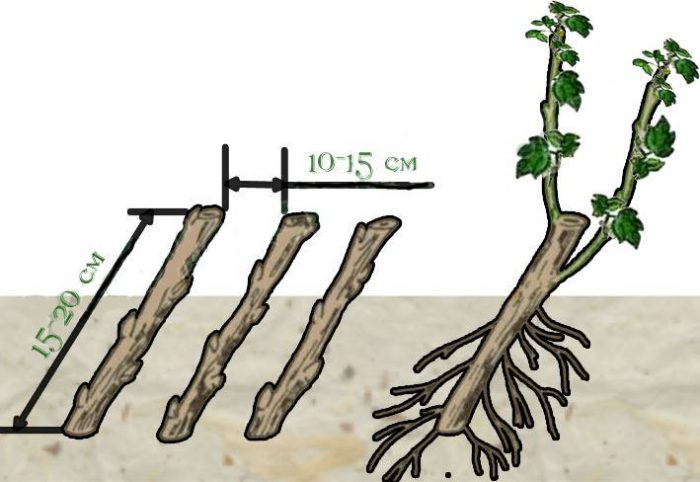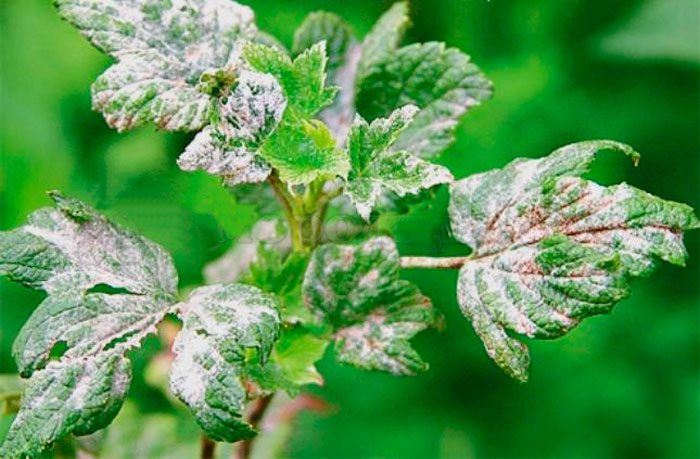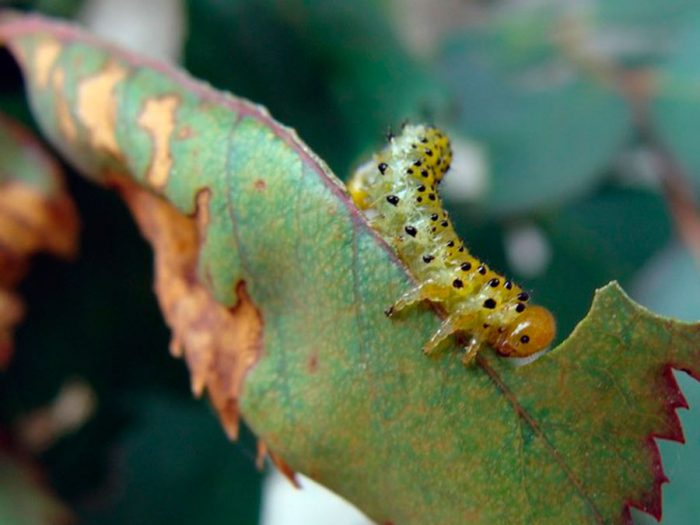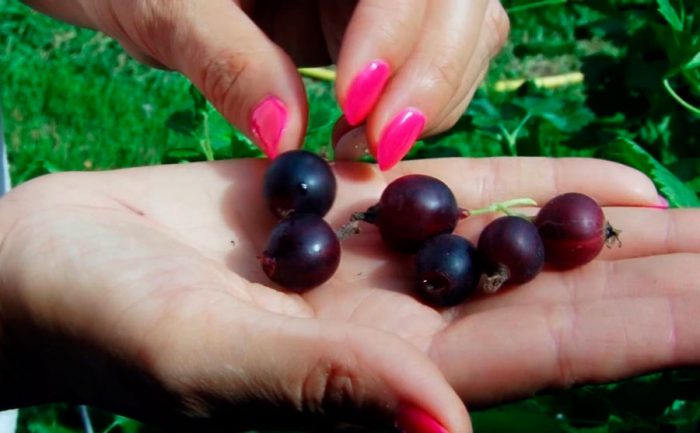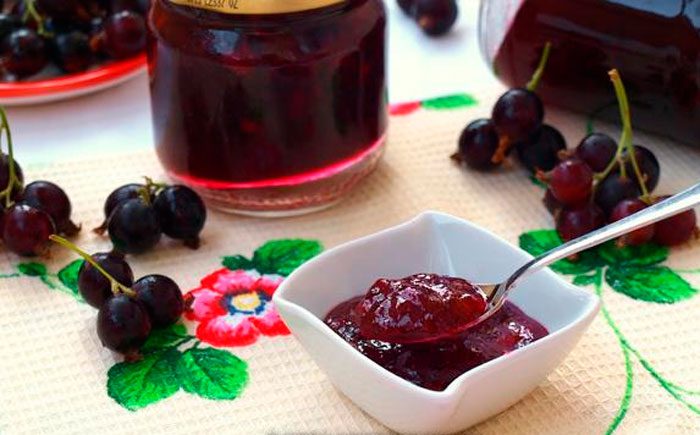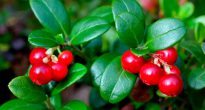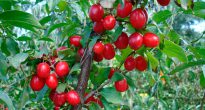Yoshta is a hybrid of common gooseberries, spreading gooseberries and black currants. The name of this plant, Josta, was formed from the first syllables of two German words, namely, Johannisbeere - meaning "currant" and Stachelbeere - "gooseberry". The appearance of this shrub occurred in the seventies of the last century, its creator is Rudolf Bauer, a breeder from Germany. He worked on the creation of yoshta for more than one year. And only in 1989 this hybrid was prepared for industrial production. In Russia, yoshta is still only being looked at, but in Western Europe it is very popular.
Content
Features of the Yoshta hybrid
The Yoshta hybrid is a sprawling, powerful shrub. The height of the stems of this perennial is about 150 cm and more. The depth of its root system is about 0.3–0.4 m. Despite the fact that gooseberries were used to create the yoshta, there are no thorns. The crown reaches 150-200 centimeters in diameter. Glossy large dark green leaf plates are similar in shape to currant foliage, but do not have its characteristic odor. The foliage does not fall off the plant until winter. The flowers are large and rich in color. Sweet-sour fruits have a black color with a purple tint; they look like cherries. Fruits are collected in a cluster of 3-5 pieces. As a rule, fruiting begins when the plant is 2 years old.
Such a winter-hardy plant is resistant to pests and diseases. It can live for 20-30 years. The relatives of this hybrid are not only black currants and gooseberries, but also white currants and red currants.
Planting yoshta in open ground
What time to plant
It is necessary to plant yoshta in open ground in the spring before sap flow begins or in the first autumn weeks. Choose a well-lit area for planting, and the soil should be saturated with nutrients.Many gardeners are sure that gooseberries or currants must necessarily grow near the yoshta bush, since there is an opinion that only in this case the hybrid plant will develop well and bear fruit.
When choosing seedlings in a nursery, you should make a thorough examination of their root system. Please note that it must be absolutely healthy and powerful. If the root system is weathered and dry, then there is a high probability that the seedling will not take root. The color of the "underside" of the bark should be green, but if it is brown, the seedling may be dead. If the seedling was purchased in the autumn, then before planting it in open soil, all leaf plates must be carefully torn off from it, while not injuring the kidneys. Cut out any dried and rotted roots, and trim the remaining ones a little. In the event that the roots look chapped or dry, then they need to be placed in a container of water for 24 hours.
Planting yoshta in spring
The planting pit should be of such a size that the root system fits freely in it, and there is still room left. So, the approximate size of the pit is 0.5x0.5x0.5 meters. Preparing the pit should be done in the fall. The distance between the bushes should be about 150-200 cm. When creating a hedge, the distance between the plants should be from 0.4 to 0.5 meters.
Pour ½ a bucket of compost or humus, 100 grams of superphosphate, 0.5 liters of wood ash and a small amount of soil from the infertile layer into the planting pit. Mix everything well. This dredge should be filled with 1/3 of the pit. Then the hole is half filled with nutrient soil taken from the top layer of the soil. At the end, 10 liters of water should be poured into it.
During the winter period, the soil will have time to settle and settle well. In the spring, the bottom of the pit should be loosened a little, then a seedling is set in the center. After the roots are carefully spread out, the hole should be filled with nutrient soil from the topsoil. The hole must be filled up gradually, while systematically shaking the seedling in order to eliminate all voids in the soil. The surface of the near-stem circle of the planted plant should be slightly compacted. 10 liters of water are poured under the bush. When the soil dries up a little, its surface should be covered with a layer of mulch (humus, hay, grass, peat or straw), while the layer thickness can vary from 5 to 10 centimeters. Then you need to prune the plant, leaving no more than 2 or 3 buds on each stem.


Watch this video on YouTube
Autumn planting
The procedure for planting yoshta in open ground in autumn is exactly the same as in spring. However, in this case, the landing pit must be prepared half a month before the day of disembarkation.
Yoshta care in the garden
Growing yoshta, like black currants, is quite simple. At the same time, it is much easier to care for such a hybrid compared to a gooseberry, since it does not have thorns. All you need to do is to loosen the surface of the trunk circle in a timely manner, remove weeds, feed and water, and also protect the plant from diseases and pests.
In April, you need to loosen the site for the first time in a season. In this case, the surface of the trunk circle is loosened to a depth of 4 to 6 centimeters, and the soil between the rows - from 8 to 10 centimeters. The soil is loosened once every 15–20 days. To reduce the number of loosening, watering and weeding, you just need to cover the surface of the site with mulch. Also, mulching helps to create favorable conditions for the growth and nutrition of yoshta. It is recommended to mulch the site with peat or humus. Make sure that the surface of the trunk circle is a little damp and loose at all times. If weeds appear, remove them from the area immediately.
Yoshta processing
Such a plant must be protected from various diseases and pests.To do this, it is necessary to systematically carry out timely treatment of the plant every year for the purpose of prevention. So, the treatment of the shrub is carried out in the spring before bud break and in the fall, when all the leaves fall off, and the dormant period begins. For treatment, a solution of copper sulfate (1%), Bordeaux mixture (1%), Nitrafen (1%) or urea (7%) is used. When using urea, you will not only protect the yoshta from various diseases and pests, but also feed it with nitrogen. Processing should be carried out only when the outside air temperature is at least 5 degrees.
How to water
It is necessary to water the shrub systematically, while using a sufficient amount of liquid. If the plant lacks moisture, then this can lead to a delay in its development and growth. In this regard, it is imperative to ensure that the surface of the trunk circle is always moist throughout the season. During irrigation, the soil should get wet to a depth of 0.3–0.4 m, this is where the root-forming layer is located. On average, 2–3 buckets of water are taken for 1 square meter of the plot during irrigation.
Water the yoshta in the morning or in the evening when the sun goes down. Experienced gardeners advise making shallow (about 10-15 centimeters) grooves around the bush, which should be located 30-40 centimeters beyond the crown projection. It is into these grooves that you need to pour water during watering. On the outside of the groove, limit rollers must be made of the ground, which should be 15 centimeters high. How often the bush will have to be watered is influenced by the weather, the moisture permeability of the soil, and whether the area is mulched or not.
Yoshta feeding
The near-trunk circle of the yoshta must be covered with a layer of mulch (humus or peat). The amount of mulch used per 1 bush should be about 20 kilograms, this organic matter will not only prevent the rapid drying of the soil and its cracking, but will also become a source of nutrients for the bush.
Until the age of three, the shrub needs such an amount of mineral fertilizers per season as 20 grams of potassium sulfate and from 30 to 40 grams of superphosphate per 1 square meter. After the plant turns 4 years old, the amount of phosphate fertilizers should be reduced to 25–30 grams, and potash fertilizers should be increased to 25 grams per 1 square meter.
In autumn, wood ash should be poured under each shrub, which is taken in a volume of 500 ml.
Pruning yoshta
You need to cut yoshta in the spring before sap flow begins, as well as in the fall at the end of the leaf fall.
Pruning yoshta in spring
In spring, the plant needs sanitary pruning, for this you need to cut out all injured and diseased stems. Those shoots that have suffered from frost must be shortened to healthy tissue. The bush does not need formative pruning. In an adult plant, it is necessary to shorten seven to eight-year-old branches, while 6 buds should remain on the segments.


Watch this video on YouTube
Pruning yoshta in autumn
In the autumn, after all the leaves have fallen from the bush, and the dormant period begins at the plant itself, you need to carry out sanitary pruning. To do this, remove all injured and infected stems, as well as those that contribute to the thickening of the bush. The remaining healthy branches should be shortened by 1/3 part.
Reproduction of yoshta
For the reproduction of yoshta, like black currant, gardeners use vegetative methods, namely: cuttings, layering and dividing the bush.
Propagation of yoshta by dividing the bush
The division of the bush is carried out in the autumn and only if the bush is transplanted to another place. First you need to remove the bush from the soil and remove all the soil from its root system.Then a pruner or a very sharp knife is taken, with which the bush is cut into several parts, while taking into account that each division should have 1 or 2 strong stems and developed roots. Places of cuts should be sprinkled with crushed charcoal. The finished cuttings need to be planted in a new place.
Yoshta propagation by layering
When the soil warms up well in spring, it is necessary to choose developed one- or two-year branches that bend to the surface of the site and fit into the grooves prepared in advance, not very deep (about 10 centimeters). The stems must be fixed with metal hooks. Then the grooves are covered with nutritious soil, and the tops rising above the ground are pinched. After the height of the shoots grown near the cuttings reaches 10-12 centimeters, they will need to be covered with soil by ½ part. After 15–20 days, the plant is spud again to the same height. In autumn or with the onset of the next spring period, the cuttings that have given roots must be cut off from the parent plant and disconnected from each other, and then planted in a permanent place. In addition to this method of propagation by horizontal layers, arcuate and vertical layers are used.
Propagation of yoshta by cuttings
In order to propagate yoshta, you can use semi-lignified or green cuttings. For cutting semi-lignified cuttings, two-four-year branches from matured stems are used. It is recommended to harvest such cuttings in autumn, from mid to late September, cuttings planted at this time in open soil, quickly root and winter well, and in spring they begin to grow actively. The length of the cutting can vary from 15 to 20 centimeters, they can have 5 or 6 buds. The unripe upper part of the shoot is not used for harvesting cuttings. The cuttings are planted in dug soil, while the distance between them should be from 0.6 to 0.7 m, and they must be placed at an angle of 45 degrees. Only 2 buds should remain above the soil, while it is necessary that the lower one is located on the same level with the surface of the site. Near the cuttings, the soil must be tamped, then watered, and the surface of the soil is covered with a layer of mulch (peat). It is very simple to care for planted cuttings, so, they need to be watered, weeded and loosened in a timely manner, especially in the first 4 weeks after planting.
For harvesting green cuttings, the upper parts of the shoots are used. Their length can vary from 10 to 15 centimeters. All leaf plates are cut off from the cuttings, only 2 pairs of upper ones should remain, which should be shortened by 1/3 part. Planting of green cuttings is carried out throughout the summer period, from June to early September. For them, you need to prepare a cold greenhouse in advance. A small incision must be made above each bud in the cuttings, and several incisions are made in the lower part. The lower sections of the cuttings should be placed in a solution of a preparation that promotes rapid root growth for 12 hours. Then the cuttings are rinsed in clean water and planted in a prepared greenhouse at an inclination of 45 degrees almost close to each other. The planting must be watered using a small sieve, then the greenhouse is covered with a lid, which must be transparent. The distance from the tops of the cuttings to the lid should be at least 15–20 centimeters. In the early days, you should not lift the lid, because there must be high humidity inside the greenhouse, while the air temperature should be kept at at least 20 degrees. After the temperature inside the greenhouse becomes more than 25 degrees, you should start airing the cuttings every day, for this you need to lift the lid for a while. If everything is done correctly, then after 20-30 days the cuttings should give roots.Rooted cuttings need to be hardened, for this you should remove the greenhouse cover for a while every day, while gradually increasing the duration of this procedure. After the cuttings adapt to the new conditions and get stronger, the greenhouse cover is removed for good. According to the observations of experts, a large percentage of green cuttings of such a shrub take root. Fortified cuttings need to be grown, for this they are planted in school. When the cuttings take root in open soil, they will need feeding, for this they use a solution of saltpeter (for 10 liters of water, 30 grams of saltpeter). It is quite easy to care for such cuttings. To do this, you need to ensure that the soil near them is always a little damp and loose, and also weed and loosen the surface of the site in time. With the onset of the next spring period, the cuttings can be transplanted to a permanent place.
Yoshta pests and diseases
Yoshta's diseases
Yoshta is susceptible to the same diseases and pests as black currant, and you need to deal with them in the same ways. Below, only those diseases that occur most often will be listed, namely: anthracnose, goblet and columnar rust, powdery mildew, septoria, cercospora, mosaic and terry.
Such diseases as terry and mosaic have not yet learned to cure, in this regard, the specimens affected by them must be removed from the ground and destroyed as soon as possible. To get rid of fungal diseases, the affected plant should be sprayed with a fungicide, for example: Bayleton, Topaz, Fundazol, Maxim, Skor or another means of similar action. However, in order for the plant to have greater resistance to diseases, it must be properly looked after, adhering to the rules of agricultural technology, as well as timely processing for prevention purposes.
Yoshta pests
The same pests can settle on yoshta as on gooseberries and on various types of currants. So, this plant can be harmed by various types of aphids and ticks, currant glass, as well as moth butterflies. To get rid of such harmful insects, you should treat the plant with an insecticide, for example: Akarin, Decis, Kleshchevit, Agravertin, Aktellik, Kleshchevit, etc.
Yoshta varieties with photos and descriptions
Since yoshta is a hybrid plant, there are not very many varieties of it. All of them are divided into 2 types, namely: varieties that have a large number of similarities with currants, as well as those that are very similar to gooseberries. Below will be a small description of the varieties of this shrub:
- EMB... This British variety is resistant to pests and diseases. He is tall, so his height can reach 180 centimeters. Most of the characteristics of the variety are similar to gooseberries. Such a shrub blooms for about half a month. This variety bears fruit quite abundantly. On average, the fruits weigh about 5 grams, they have excellent taste. Ripening of berries lasts about 8 weeks.
- Crown... This variety was created by Swedish breeders. This plant has an average yield, while its fruits are not very large. Ripe fruits do not fall off the branches for a long time. This shrub is often used for landscaping and to create hedges.
- Rext... This variety was created in Russia. It is resistant to frost and yield. The fruits are small, their average weight is about 3 grams. They taste great.
- Yohini... This variety is highly productive. The height of such a shrub does not exceed 200 centimeters. Very sweet fruits have a taste that bears little resemblance to currants and gooseberries.
- Moreau... The height of this shrub is about 250 centimeters. This variety is columnar, which means that it is tall and compact. The color of the berries is dark, almost black, their size is similar to that of a cherry.Fruits have a strong nutmeg smell, and there is a purple bloom on their surface.
All the varieties listed above can be safely cultivated both in the Moscow region and in regions with a more severe climate, including in the middle latitudes.
Yoshta properties: harm and benefit
Useful properties of yoshta
The fruits of the yoshta hybrid plant contain a large amount of medicinal and useful substances for the human body. In this regard, their benefits for the human body are quite large:
- Yoshta fruits contain a lot of vitamin C, which has a positive effect on the immune system of the human body, and also helps to protect against colds.
- Berry anthocyanin and vitamin P have a strengthening effect on the vascular walls and improve blood circulation.
- Such berries are used in the treatment of anemia because they can increase the level of hemoglobin in the blood.
- Its fruits help to normalize the work of the digestive tract, so they are recommended to be used for constipation, as well as for similar disorders.
- People suffering from hypertension are advised to eat the berries of this hybrid, combined with honey.
- These berries also contain phytoncides. They can protect a person from a variety of microbial infections, as well as eliminate inflammatory processes in the body.
- People with diabetes can safely eat such berries, since the sugars in them do not provoke the development of the disease.
- Such fruits are recommended to be eaten by people wishing to lose weight or suffering from obesity. The fact is that they speed up metabolic processes and also burn fat.
- Yoshta helps to stimulate the work of the excretory system, thanks to which toxins, radionuclides, toxins, as well as heavy metals are naturally eliminated from the body.
You can eat the incredibly healthy fruits of such a shrub not only in summer, but at any time, for this they need to be dried or frozen in the refrigerator. At the same time, you should know that dried or frozen fruits have practically the same beneficial properties as fresh ones. Also, from the fruits of yoshta, you can make delicious jam, compote, wine, jam and jelly.
2 popular recipes
- Take 1 kg of ripe yoshta fruits, sort them carefully, removing all tails and twigs, and wash them. Then they are ground with a blender. The berries must be mixed with a kilogram of granulated sugar. Thoroughly mixed mass must be put on fire. After the mass boils, put 2 mint leaves in it and remove the foam. Ready jam is poured into sterilized jars, which are sealed.
- The washed and carefully sorted fruits in the amount of 1 kilogram must be passed through a meat grinder 2 times. The mass is mixed with 2 kilograms of granulated sugar. The mixture is placed in jars, which should be filled a couple of fingers below the neck. They are tightly closed with capron lids and placed for storage on a refrigerator shelf. In the resulting mixture, most of the beneficial substances of yoshta are preserved.
Contraindications
The use of yoshta fruits should be abandoned by those people who have individual intolerance. People suffering from thrombophlebitis are not recommended to eat them too often and in large quantities, as they may increase blood clotting. Also, the fruits should not be eaten by those people who have serious diseases of the digestive tract, for example: colitis, duodenal ulcer or stomach.


Watch this video on YouTube

